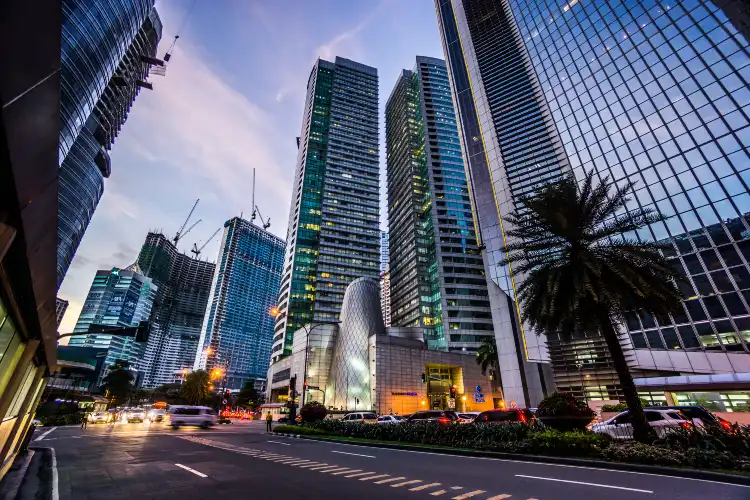
Ανακαλύψτε τη διαμονή σας σε Manila
Πληκτρολογήστε τις ημερομηνίες του ταξιδιού σας για να ελέγξετε τις τελευταίες τιμές και τη διαθεσιμότητα
Σαρώστε προς τα πάνω για προβολή περισσότερων
Φιλτράρισμα κατά:
Βαθμολογία με αστέρια ξενοδοχείου
≤2345
Δημοφιλή φίλτρα
Καταπληκτικό 4.5+Εξαιρετικό 4.0+Καλό 3.5+Ευχάριστο 3.0+Βρήκαμε 1229 ξενοδοχείο για εσάς στην πόλη Manila
Επιλέξτε τις ημερομηνίες του ταξιδιού σας για να δείτε τις τελευταίες τιμές.
Πιο δημοφιλές
Κατώτατη τιμή
Πιο κοντά στο κέντρο της πόλης
Κορυφαίες αξιολογήσεις


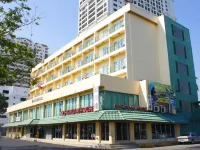
Ξενοδοχείο κοντά σε Manila Bay,Manila Το 100% των επισκεπτών επιλέγουν αυτήν την περιοχή
MMeander827892 2020.01.24
I arrived and check in went smoothly, got the city lights room, very spacious, Good room away from traffic noise, the staff was great, and the cleaners made my stay amazing! enjoyable! I had shower and bath combined, a pleasant supprise .Sure the hotel can do with some paint here n there, the location was suitable for my needs, easy to get taxi, door men were helpful, I ate out , I met up with my girlfriend and met her father, she also got a room there also, would i go back yes , yes yes.
20 κριτικές
3.8/5
Τιμή από
29 €
ανά διανυκτέρευση
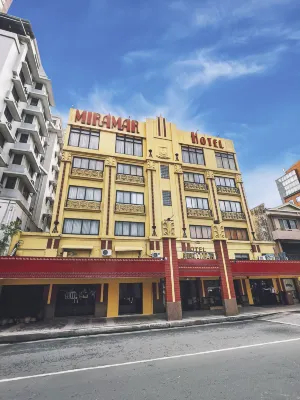


Ξενοδοχείο κοντά σε Manila Bay,Manila Το 100% των επισκεπτών επιλέγουν αυτήν την περιοχή
GGuest User 2024.04.19
Hopefully a working wifi and cable TV should be made available. Staff are courteous and helpful. Upon arrival, was given a room with no shower head and loosed shower valves. It was fixed the following day. Overall, decent.
15 κριτικές
3.4/5
Τιμή από
22 €
ανά διανυκτέρευση



Ξενοδοχείο κοντά σε Manila Bay,Manila Το 100% των επισκεπτών επιλέγουν αυτήν την περιοχή
GGuest User 2023.05.16
This hotel is adequate, but slightly overpriced vs. competition. While they have updated the lobby in recent years, from what I can tell there has been little effort to update guest rooms, which are dated vs. other 5 star properties like the Westin. The one differentiating factor this hotel previously had was a great breakfast buffet served in the Pacific Lounge on the 21st floor with floor to ceiling windows that gave a sweeping view of the skyline and the bay. It was carpeted with cushioned club chairs and those soft surfaces absorbed noise and the overall experience was a great way to start your day compared to the crowded and loud breakfast buffets at other 5 star hotels. Well someone decided to spend a lot of money to destroy that experience. They have opened a new restaurant on the first floor that is loud, crowded and gives you a view of 7-11 across the street instead of the bay. I spoke to the GM about this, so he already knows my opinion, but what continues to strike me is his point that the Pacific Lounge is “a premium space” - yes Sir, that’s true and previously it was one that virtually all your guests got to enjoy which is exactly why it was THE difference maker for this hotel. I came back thru Manila for a night on May 15 and was going to try the Sheraton one more time, but it was fully booked. Instead I stayed at the Westin for less money. There was no comparison- the Westin’s rooms have a much higher end finish, their food was better, and the service there was far superior like being provided a welcome drink and the Manager sending fruit to my room with a welcome note. The Sheraton Manila Bay is no longer on par with Manila’s best hotels
Excellent
151 κριτικές
4.5/5
Τιμή από
160 €
ανά διανυκτέρευση

Μπορεί να προτιμάτε
Ξενοδοχεία με πρωινόΞενοδοχεία με δίκλινο δωμάτιο με 2 μονά κρεβάτιαΞενοδοχεία με 1 διπλό κρεβάτιΞενοδοχεία με πισίναΞενοδοχεία με δωρεάν ακύρωση

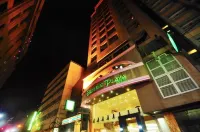

Ξενοδοχείο κοντά σε Manila Bay,Manila Το 100% των επισκεπτών επιλέγουν αυτήν την περιοχή
GGuest User 2024.10.06
The room I choose is nice&spacious, it isclean, AC is working, except for the soap dispencer difficult to use/dispence. Staffs are nice. The lobby is spacious. The hallway from the room where we stayed is clean. The hotel is near to everywhere. Over all rating, Im giving you 5 star. Thank you. Happy & satisfied travelers here.
Very Good
474 κριτικές
4.0/5
Τιμή από
29 €
ανά διανυκτέρευση



Ξενοδοχείο κοντά σε Manila Bay,Manila Το 100% των επισκεπτών επιλέγουν αυτήν την περιοχή
AAnonymous User 2024.10.02
I booked a Luneta Suite but was upgraded to a Tower Suite upon check-in, as my room wasn't ready, and I ended up waiting for about an hour. While the Tower Suite was spacious at approximately 30 sqm and comfortable, the view of the Port Area was a bit disappointing. I was hoping for a Manila Bay view.
However, the staff did go above and beyond to make my stay more comfortable. I requested to have breakfast in my room instead of going to the buffet, and they graciously accommodated this, which I truly appreciated. The service overall was attentive and courteous, and the in-room breakfast was a nice touch.
The hotel itself is rich in history and charm, but the long wait at check-in and the view from the suite did slightly detract from the experience. Despite these minor issues, Manila Hotel offers a classic stay with excellent service. I would consider staying again, hoping for a smoother check-in and a better view next time.
Excellent
437 κριτικές
4.5/5
Τιμή από
93 €
ανά διανυκτέρευση



Ξενοδοχείο κοντά σε Manila Bay,Manila Το 100% των επισκεπτών επιλέγουν αυτήν την περιοχή
GGuest User 2023.06.04
Thank you Diamond hotel for making our stay very satisfying, you make us feel that we are at Home, so happy that we get to have a chance to relax during our day off at work. We really enjoyed our stay and looking forward for another vacation with you with my family 💞
Very Good
135 κριτικές
4.1/5
Τιμή από
108 €
ανά διανυκτέρευση
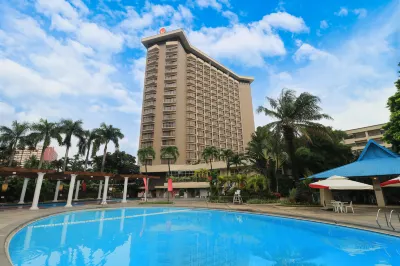


Ξενοδοχείο κοντά σε Malate,Manila Το 9.6% των επισκεπτών επιλέγουν αυτήν την περιοχή
AAleecia Lee 2024.08.07
Worth the price ofc worth the hype fr cs look at how aesthetic the room and the pool it is🥹🤍But sadly the balcony has no access because they locked it permanently. It’s sad for me bcs balcony is a must for me😮💨💔 But the service is really GOOODDD they help me as much, even if you call them first to ask so many questions and they will answer it very well. Great Hospitality⭐️⭐️⭐️⭐️⭐️⭐️⭐️
Excellent
372 κριτικές
4.4/5
Τιμή από
50 €
ανά διανυκτέρευση



Ξενοδοχείο κοντά σε Paco,Manila
GGuest User 2019.09.03
It's really rubbish. Apart from the good attitude of the front desk service, nothing is the same. When I entered the house, the water was stopped. The hot water suddenly became cold and hot. The bottled water drank almost the same as the water in the swimming pool. All kinds of furniture were about to fall apart. The sound of air conditioning sounded equivalent to the level of aircraft engines.
In addition, I did n’t understand when I first came to Manila. Ctrip wrote xx kilometers from the city center. This city center is the old city of Manila. The real urban area is in Makati. I'm still wondering how I couldn't find a five-star hotel in Manila
16 κριτικές
3.2/5
Τιμή από
43 €
ανά διανυκτέρευση



Ξενοδοχείο κοντά σε Manila Bay,Manila Το 100% των επισκεπτών επιλέγουν αυτήν την περιοχή
GGuest User 2023.08.22
I was dropped off at this hotel by a taxi driver (a faulty address had been given by my airbnb reservation). This was the first time I was in the country, so, even though I am a man, I was traveling solo and was a bit nervous to be dropped off at a place that was not my own. The hotel guard opened the car door and greeted me. I told him that I could not contact my host because my internet service was not good here. The guard, with a smile, picked up my luggage and told me that we would sort it all out inside. At this point, I thought to myself, I will ask for the hotel wifi to contact my host. Inside I was welcomed by two very gentle front desk staff, Mayumi and Diwata, who welcomed me, and helped me contact the Airbnb host and told me that they would grab a taxi once they had it all sort it out. What an amazing country, and what amazing ambassadors! I have traveled through many countries and I have to say, this did not feel like a transaction, but the staff were really empowered to make anyone they come into contact with happier than they found them. Every hotel has beds, and amenities, but not every hotel is a safe haven. Casa Bocobo definitely will make your stay feel like an experience beyond giving you a place to bunk for the night. I went back to the hotel this morning to drop off doughnuts for the staff. I will book my next stay there for sure.
Very Good
42 κριτικές
4.0/5
Τιμή από
35 €
ανά διανυκτέρευση



Ξενοδοχείο κοντά σε Malate,Manila Το 9.6% των επισκεπτών επιλέγουν αυτήν την περιοχή
RRanjie Banac 2024.09.19
I am really speechless about this hotel. I tried so many hotels before but this is the best hotel I stayed! good job g sqaure!
Very Good
35 κριτικές
4.0/5
Τιμή από
15 €
ανά διανυκτέρευση
Κορυφαίες επιλογές ξενοδοχείων στην πόλη Manila που λατρεύουν οι ταξιδιώτες
Εμφάνιση όλων
Επιλέξτε ένα από αυτά τα ξενοδοχεία με τις περισσότερες κρατήσεις τον τελευταίο μήνα
No.1
4.1/5
434 κριτικήEurotel Pedro Gil
Ξενοδοχείο σε Malate, Manila Το 9.6% των επισκεπτών επιλέγουν αυτήν την περιοχή
"Great stay!""Great service"
Επιλέξτε ημερομηνίες για να δείτε τις τιμέςNo.2
4.2/5
1084 κριτικήSwiss-Belhotel Blulane
Ξενοδοχείο σε Santa Cruz, Manila
"Great location""Great value for money"
Επιλέξτε ημερομηνίες για να δείτε τις τιμέςNo.3
4.3/5
1261 κριτικήManila Prince Hotel
Ξενοδοχείο σε Ermita, Manila
"Delicious breakfast""Large rooms"
Επιλέξτε ημερομηνίες για να δείτε τις τιμέςNo.4
4.5/5
147 κριτικήlyf Malate Manila
Ξενοδοχείο σε Malate, Manila Το 9.6% των επισκεπτών επιλέγουν αυτήν την περιοχή
"Great service""Clean and tidy"
Επιλέξτε ημερομηνίες για να δείτε τις τιμέςNo.5
4.2/5
492 κριτικήBayview Park Hotel Manila
Ξενοδοχείο σε Manila Bay, Manila Το 100% των επισκεπτών επιλέγουν αυτήν την περιοχή
"Great stay!""Friendly owner"
Επιλέξτε ημερομηνίες για να δείτε τις τιμέςNo.6
3.9/5
458 κριτικήRed Planet Manila Malate Mabini
Ξενοδοχείο σε Manila Bay, Manila Το 100% των επισκεπτών επιλέγουν αυτήν την περιοχή
"Convenient for shopping""Great value for money"
Επιλέξτε ημερομηνίες για να δείτε τις τιμέςNo.7
4.2/5
565 κριτικήNew Coast Hotel Manila
Ξενοδοχείο σε Manila Bay, Manila Το 100% των επισκεπτών επιλέγουν αυτήν την περιοχή
"Friendly owner""Great value for money"
Επιλέξτε ημερομηνίες για να δείτε τις τιμέςNo.8
3.3/5
261 κριτικήManila Manor Hotel
Ξενοδοχείο σε Malate, Manila Το 9.6% των επισκεπτών επιλέγουν αυτήν την περιοχή
"Good Location"
Επιλέξτε ημερομηνίες για να δείτε τις τιμέςNo.9
4.0/5
590 κριτικήGo Hotels Ermita, Manila
Ξενοδοχείο σε Manila Bay, Manila Το 100% των επισκεπτών επιλέγουν αυτήν την περιοχή
"Great stay!"
Επιλέξτε ημερομηνίες για να δείτε τις τιμέςNo.10
4.2/5
134 κριτικήPalm Hotel Manila
Ξενοδοχείο σε Manila Bay, Manila Το 100% των επισκεπτών επιλέγουν αυτήν την περιοχή
"Great location""Great stay!"
Επιλέξτε ημερομηνίες για να δείτε τις τιμέςΞυπνήστε με ένα νόστιμο πρωινό στην πόλη Manila
Εμφάνιση όλων
Ξεκινήστε την ημέρα σας με ένα νόστιμο πρωινό σε ένα από τα αγαπημένα μας ξενοδοχεία σε αυτήν την πόλη
Admiral Hotel Manila - MGallery
Ξενοδοχείο σε Manila Bay, Manila Το 100% των επισκεπτών επιλέγουν αυτήν την περιοχή
The reimagined Admiral Hotel Manila MGallery transports guests to the high-society glamour of the city's Golden Age. The boutique hotel's elegant blend of classic and contemporary Filipino-Spanish styles celebrates the synergy of cultures and pays tribute to its original heritage. Its 123 luxury rooms, signature dining venues, bespoke event spaces and other exemplary facilities complemented by outstanding service make it the perfect destination for romantic breaks, family vacations and inspiring events.
4.2/5
Very Good57 κριτικήΤιμή ανά διανυκτέρευση από: EUR 131
Ramada by Wyndham Manila Central
Ξενοδοχείο σε China Town, Manila Το 1.3% των επισκεπτών επιλέγουν αυτήν την περιοχή
As the only luxury hotel in the World’s Oldest Chinatown, Ramada by Wyndham Manila Central brings you a step closer to the gastronomical adventures and cultural wonders that Binondo has to offer. Located just 11 kilometers away from Ninoy Aquino International Airport, you have an easy access to Manila’s historic spots: the walled district of Intramuros, the Fort Santiago, and the Rizal Park are all within a 4-km distance. And just next door is one of Manila’s oldest and most beautiful churches - Minor Basilica of St. Lorenzo Ruiz, or more commonly known as Binondo Church. For the history junkee in you, drop by Escolta Street and be greeted by towering historical architectures, and if you are lucky have a meet and greet with local artists. Do not forget also to take a quick photo-op at the Parisian-inspired Jones Bridge which is more delightful to see as soon as the night falls. For the shopaholic in you, a ten-minute walk from the hotel will bring you to Divisoria, the most popular bargain haven in the city, and a twenty-minute ride will bring you to SMX Convention Center and Mall of Asia, one of the biggest malls in the world. Committed to providing genuine Filipino hospitality, Ramada by Wyndham Manila Central, part of the Wyndham Hotels and Resorts worldwide, provides you international standards in delivering superior service and a broad range of facilities. You’ll feel right at home in our contemporary Asian-inspired rooms featuring high quality amenities such as iPod docking stations, complimentary wireless Internet access, flat-screen TV with cable channels, private bathroom with rain showers, hairdryer, personal safe, and minibar. Dedicated in ensuring that your stay is as comfortable as possible, the hotel offers you a vast array of services, including airport transfer, facilities for disabled guests, and free shuttle service to Rizal Park, a perfect jump off point to Manila’s popular and must-visit tourist spots such us National Museum, newly modified Manila Zoo, and many more. The hotel also boasts of world-class function rooms, perfect for corporate and social events; and fitness center to keep you on track of your fitness routine.
4.1/5
Very Good244 κριτικήΤιμή ανά διανυκτέρευση από: EUR 43
Hotel H2O
Ξενοδοχείο σε Manila Bay, Manila Το 100% των επισκεπτών επιλέγουν αυτήν την περιοχή
With a stay at Hotel H2O in Manila (Ermita), you'll be a 4-minute drive from Manila Bay and 8 minutes from SM Mall of Asia. This 4-star hotel is 0.5 mi (0.8 km) from U.S. Embassy and 6.2 mi (10 km) from Newport World Resorts.
Pamper yourself with a visit to the spa, which offers massages, body treatments, and facials. If you're looking for recreational opportunities, you'll find an outdoor pool, an indoor pool, and a sauna. Getting to nearby attractions is a breeze with the area shuttle (surcharge) that operates within 10 meters.
Grab a bite to eat at the Makan Makan Food Village, a restaurant where you can take in the ocean view, or stay in and take advantage of room service (during limited hours). Quench your thirst with your favorite drink at the bar/lounge. Buffet breakfasts are available daily from 6 AM to 10 AM for a fee.
Featured amenities include a 24-hour front desk, an elevator, and coffee/tea in a common area. Planning an event in Manila? This hotel has facilities measuring 4413 square feet (410 square meters), including a conference center. Guests may use a roundtrip airport shuttle for a surcharge, and self parking (subject to charges) is available onsite.
Make yourself at home in one of the 147 air-conditioned rooms featuring refrigerators and LCD televisions. Your room comes with a pillowtop bed. Complimentary wireless Internet access keeps you connected, and cable programming is available for your entertainment. Private bathrooms with showers feature rainfall showerheads and complimentary toiletries.
4.1/5
Very Good53 κριτικήΤιμή ανά διανυκτέρευση από: EUR 52
Rizal Park Hotel
Ξενοδοχείο σε Manila Bay, Manila Το 100% των επισκεπτών επιλέγουν αυτήν την περιοχή
With a stay at Rizal Park Hotel in Manila (Ermita), you'll be steps from Rizal Park and 4 minutes by foot from Manila Ocean Park. This 4-star hotel is 0.3 mi (0.4 km) from U.S. Embassy and 1.5 mi (2.5 km) from Manila Bay.
Pamper yourself with onsite massages or enjoy recreation amenities such as a casino. Additional features at this hotel include complimentary wireless Internet access and concierge services.
Enjoy a meal at Imperial Court or snacks in the coffee shop/cafe. The hotel also offers room service (during limited hours). Wrap up your day with a drink at the bar/lounge. Cooked-to-order breakfasts are available daily from 6:30 AM to 10:00 AM for a fee.
Featured amenities include a business center, complimentary newspapers in the lobby, and dry cleaning/laundry services. Free self parking is available onsite.
Make yourself at home in one of the 107 air-conditioned rooms featuring flat-screen televisions. Complimentary wireless Internet access keeps you connected, and cable programming is available for your entertainment. Private bathrooms with showers feature complimentary toiletries and bidets. Conveniences include safes and desks, as well as phones with free local calls.
4.1/5
Very Good163 κριτικήΤιμή ανά διανυκτέρευση από: EUR 53
Winford Resort and Casino Manila
Ξενοδοχείο σε Santa Cruz, Manila
Located in Manila (Santa Cruz), Winford Manila Resort and Casino is within a 10-minute drive of U.S. Embassy and Manila Ocean Park. This 4-star hotel is 7.2 mi (11.6 km) from SM Mall of Asia and 2.9 mi (4.6 km) from Rizal Park.
Try your luck at the casino and enjoy other recreational amenities including an outdoor pool and a sauna. Additional features at this hotel include complimentary wireless Internet access, concierge services, and a living plant wall. Getting to nearby attractions is a breeze with the area shuttle (surcharge).
Satisfy your appetite for lunch or dinner at Copa de Manila, a restaurant which specializes in Filipino cuisine, or stay in and take advantage of the 24-hour room service. Quench your thirst with your favorite drink at the bar/lounge. Buffet breakfasts are available daily from 6 AM to 10 AM for a fee.
Featured amenities include complimentary newspapers in the lobby, dry cleaning/laundry services, and a 24-hour front desk. A roundtrip airport shuttle is provided for a surcharge (available 24 hours), and free self parking is available onsite.
Make yourself at home in one of the 128 air-conditioned rooms featuring flat-screen televisions. Complimentary wireless Internet access keeps you connected, and cable programming is available for your entertainment. Private bathrooms with showers feature rainfall showerheads and complimentary toiletries. Conveniences include safes and desks, as well as phones with free local calls.
4.3/5
Excellent81 κριτικήΤιμή ανά διανυκτέρευση από: EUR 85
Armada Hotel Manila
Ξενοδοχείο σε Manila Bay, Manila Το 100% των επισκεπτών επιλέγουν αυτήν την περιοχή
With a stay at Armada Hotel, you'll be centrally located in Manila, a 1-minute drive from Manila Bay and 5 minutes from SM Mall of Asia. This 4-star hotel is 1.6 mi (2.5 km) from U.S. Embassy and 4.9 mi (7.9 km) from Newport World Resorts.
Pamper yourself with a visit to the spa, which offers massages, body treatments, and facials. You can take advantage of recreational amenities such as an outdoor pool and a fitness center. This hotel also features complimentary wireless Internet access, concierge services, and wedding services.
For lunch or dinner, stop by Caliber Cafe, a restaurant that specializes in international cuisine. Dining is also available at the coffee shop/cafe, and room service (during limited hours) is provided. Full breakfasts are available daily from 6 AM to 10 AM for a fee.
Featured amenities include a business center, complimentary newspapers in the lobby, and dry cleaning/laundry services. Event facilities at this hotel consist of a conference center and a meeting room. A roundtrip airport shuttle is provided for a surcharge (available 24 hours), and free self parking is available onsite.
Make yourself at home in one of the 96 individually furnished guestrooms, featuring refrigerators and DVD players. Wired and wireless Internet access is complimentary, and LCD televisions with satellite programming provide entertainment. Bathrooms have complimentary toiletries and slippers. Conveniences include safes and desks, and housekeeping is provided once per stay.
3.4/5
100 κριτικήΤιμή ανά διανυκτέρευση από: EUR 40
The Bayleaf Intramuros
Ξενοδοχείο σε Intramuros, Manila
With a stay at The Bayleaf Intramuros Hotel in Manila (Intramuros), you'll be within a 5-minute drive of Manila Bay and Rizal Park. This boutique hotel is 4.8 mi (7.8 km) from SM Mall of Asia and 6.5 mi (10.4 km) from Newport World Resorts.
Take in the views from a rooftop terrace and make use of amenities such as complimentary wireless internet access and concierge services. Additional amenities at this Art Deco hotel include wedding services and a ballroom.
Enjoy local and international cuisine at 9 Spoons, one of the hotel's 3 restaurants, or stay in and take advantage of the 24-hour room service. Snacks are also available at the coffee shop/cafe. Wrap up your day with a drink at the bar/lounge. Buffet breakfasts are available daily from 6 AM to 10:30 AM for a fee.
Featured amenities include complimentary newspapers in the lobby, dry cleaning/laundry services, and a 24-hour front desk. Event facilities at this hotel consist of a conference center and meeting rooms. A roundtrip airport shuttle is provided for a surcharge (available 24 hours), and free self parking is available onsite.
Make yourself at home in one of the 57 individually decorated guestrooms, featuring minibars and LCD televisions. Complimentary wireless internet access keeps you connected, and cable programming is available for your entertainment. Private bathrooms with showers feature rainfall showerheads and complimentary toiletries. Conveniences include safes and desks, as well as phones with free local calls.
4.2/5
Very Good68 κριτικήΤιμή ανά διανυκτέρευση από: EUR 69
Hotel Benilde Maison de La Salle
Ξενοδοχείο σε Malate, Manila Το 9.6% των επισκεπτών επιλέγουν αυτήν την περιοχή
With a stay at Hotel Benilde Maison De La Salle in Manila (San Andres Bukid), you'll be a 3-minute drive from Manila Bay and 6 minutes from SM Mall of Asia. This hotel is 2.2 mi (3.5 km) from Rizal Park and 2.6 mi (4.2 km) from U.S. Embassy.
Enjoy recreation amenities such as a fitness center or take in the view from a rooftop terrace. Additional features at this hotel include complimentary wireless Internet access, concierge services, and a banquet hall. If you'd like to spend the day shopping, you can hop on the shuttle (surcharge).
Enjoy a meal at the restaurant, or stay in and take advantage of the hotel's room service (during limited hours).
Featured amenities include a 24-hour business center, complimentary newspapers in the lobby, and dry cleaning/laundry services. Planning an event in Manila? This hotel has 3767 square feet (350 square meters) of space consisting of a conference center and a meeting room. Free self parking is available onsite.
Treat yourself to a stay in one of the 49 individually decorated guestrooms, featuring private pools and flat-screen televisions. Satellite programming and iPod docking stations are provided for your entertainment, while complimentary wireless Internet access keeps you connected. Conveniences include safes and desks, as well as phones with free local calls.
4.5/5
Excellent40 κριτικήΤιμή ανά διανυκτέρευση από: EUR 47
Lido De Paris Hotel
Ξενοδοχείο σε Santa Cruz, Manila
With a stay at Lido De Paris Hotel in Manila (Santa Cruz), you'll be within a 5-minute drive of Manila Ocean Park and U.S. Embassy. This spa hotel is 5.5 mi (8.9 km) from SM Mall of Asia and 1.2 mi (1.9 km) from Rizal Park.
Pamper yourself with a visit to the spa, which offers massages. Additional features at this hotel include complimentary wireless Internet access, concierge services, and gift shops/newsstands.
Enjoy a meal at the restaurant or snacks in the coffee shop/cafe. The hotel also offers room service (during limited hours).
Featured amenities include a business center, complimentary newspapers in the lobby, and dry cleaning/laundry services. Event facilities at this hotel consist of conference space and a meeting room. Free self parking is available onsite.
Make yourself at home in one of the 242 air-conditioned rooms featuring refrigerators and flat-screen televisions. Complimentary wireless Internet access is available to keep you connected. Private bathrooms with bathtubs or showers feature complimentary toiletries and hair dryers. Conveniences include safes and desks, and housekeeping is provided daily.
3.5/5
15 κριτικήΤιμή ανά διανυκτέρευση από: EUR 40
Red Planet Manila Bay
Ξενοδοχείο σε Manila Bay, Manila Το 100% των επισκεπτών επιλέγουν αυτήν την περιοχή
A stay at Red Planet Manila Bay places you in the heart of Manila, within a 15-minute walk of U.S. Embassy and Manila Ocean Park. This hotel is 3.8 mi (6.2 km) from SM Mall of Asia and 0.5 mi (0.8 km) from Rizal Park.
This smoke-free hotel was built in 2017.
At Red Planet Manila Bay, enjoy a satisfying meal at the restaurant.
Featured amenities include a 24-hour business center, complimentary newspapers in the lobby, and a 24-hour front desk. Free self parking is available onsite.
Make yourself at home in one of the 150 air-conditioned rooms featuring refrigerators and flat-screen televisions. Complimentary wireless Internet access keeps you connected, and cable programming is available for your entertainment. Private bathrooms with showers feature complimentary toiletries and hair dryers. Conveniences include safes and desks, and housekeeping is provided once per stay.
4.2/5
Very Good232 κριτικήΤιμή ανά διανυκτέρευση από: EUR 36
Δείτε γνώμες άλλων ταξιδιωτών για τα ξενοδοχεία στην πόλη Manila
Εμφάνιση όλων
Δείτε αληθινές αξιολογήσεις και πληροφορίες από πραγματικούς ταξιδιώτες για να σας βοηθήσουν να βρείτε το ιδανικό κατάλυμα
4.1/5
Very Good
FFrellieHotel is clean and staffs are very friendly, medyo maliit lang mga rooms and beds, but ok nman if wala nman msyadong gamit na dala, location is good malapit lang sa mga kainan and pasyalan, mdyo limited lang space ng parking which is first come first serve sa mismong hotel, kung ayaw mo mkuha parking space mo magcommute or maglakad nlng kyo if may ppuntahan, ung aircon lang din dun sa room na nabook namin is tumutulo ng konti, kaya d ganon kalamig. But overall ok nman stay namin.
Hop Inn Hotel Ermita Manila
Ξενοδοχείο σε Manila Bay, Manila Το 100% των επισκεπτών επιλέγουν αυτήν την περιοχή
Τιμή ανά διανυκτέρευση από: EUR 23
4.1/5
Very Good
GGuest UserI booked this for the location and the free breakfast. The hotel was very nice and clean. We did have to wait to check in for about 15 minutes because they were very busy. The room was nice. They upgraded our room for free. I was disappointed to find only one towel, no hand towel, and no washcloth. According to my friend who also stayed there, you can call and they will bring another towel. Now for the best part...the breakfast was buffet style, with cooked-to-order omelets, and a large variety of entrees. It was awesome! I definitely will stay there again next time I'm in Manila!
City Garden Suites
Ξενοδοχείο σε Manila Bay, Manila Το 100% των επισκεπτών επιλέγουν αυτήν την περιοχή
Τιμή ανά διανυκτέρευση από: EUR 41
4.0/5
Very Good
RRestless WandererOUR CLIENT IS ALREADY HAVING MULTIPLE CHECK INS AT THE MAINE CITY RESIDENCES, SOME OF HIS STAYS TAKE MONTHS ALREADY SINCE LAST YEAR AND HE IS VERY SATISFIED WITH THE HOTEL, THE CLEANLINESS, THE FREE WATER AND THE RATES PER NIGHT. IT IS ALSO NEAR TO THE COMPANY HE WORK FOR SO IT IS VERY GOOD PLACE TO STAY FOR HIM :) THANK YOU SO MUCH FOR TRIP.COM FOR GIVING US BEST RATES ALWAYS! WE LOVE TO BE A DIAMOND TIER MEMBER AND ENJOY UNLIMITED DISCOUNTS, THAK YOU AND GOD BLESS!
Maine City Residences
Ξενοδοχείο σε Malate, Manila Το 9.6% των επισκεπτών επιλέγουν αυτήν την περιοχή
Τιμή ανά διανυκτέρευση από: EUR 13
4.0/5
Very Good
LLudo_00The hotel is in Binondo Chinatown, it was a really good experience overall. Can easily walk around and reach all the main destinations. The only bad thing is the position, traffic was terrible, need to wait 30 more mins for a grab. It took so long to get to and arrive from the airport. Staff was great and nice and the structure is new.
Hotel Lucky Chinatown
Ξενοδοχείο σε China Town, Manila Το 1.3% των επισκεπτών επιλέγουν αυτήν την περιοχή
Τιμή ανά διανυκτέρευση από: EUR 35
3.8/5
CChris BacenaOverall, total experience was great. The only problem we had- the hair blower in the shower room was not working, though they were able to give us another blower the next day.
3.7/5
GGuest UserA hard place to find, you have to call a customer service representative just to tell you where is the exact location. The Reddoorz @ grand lodge is located with in the premises of the official Grand lodge which is by the way close, ao you have to go arounr and around to find the place. Which is exhausted! And they serve bfast at 9am!!! 🤦🏽♀️ the only good thing about is the customer service of reddoorz, kudos to them they are so very helpful. But for the property not a good experience tho.
3.7/5
RRowel IsaacI have a booking from Jan 8 to 12 2024. I came around 3am. I couldnt check in because the system says im NO SHOW. I was asked by the Front Desk to wait till 2pm to have my room ready and i have to pay again. The customer service of REDDOORZ handled the issue very well. They checked in me in the system and i was anle to have a room in 15minutes. They reinstated my original booking. Only invalidating the day i didnt arrive. With regards to the room, there is an unusual smell inside. Smells like decaying flesh. Im not sure if it is in the AC or somewhere else like bed corners, sheets, comforter, or probably ceiling.
Reddoorz Tesoro Apartments
Ξενοδοχείο σε Manila Bay, Manila Το 100% των επισκεπτών επιλέγουν αυτήν την περιοχή
Τιμή ανά διανυκτέρευση από: EUR 16
3.7/5
GGuest UserWe stay there for 3 days. Our experience is good, because the room is clean and good air-condition. The place is very near to lrt station (Vito Cruz). Also near in Ninyo Aquino Stadium and Robinson's Manila. Highly recommend for those who seek for budget friendly hotel in manila.
RedDoorz @ The Providence Tower
Ξενοδοχείο σε Malate, Manila Το 9.6% των επισκεπτών επιλέγουν αυτήν την περιοχή
Τιμή ανά διανυκτέρευση από: EUR 16
3.6/5
AAnonymous UserNice yung place malinis and complete amenities malakas rin yung wifi. Very accommodating yung mga staff. Malaki run room very spacious, pati yung comfort room malinis dn. Well working yung aircon as well as yung hot water sa cr. Well recommended, thank you
RedDoorz @ Jardin LRT Tayuman Manila
Ξενοδοχείο σε Santa Cruz, Manila
Τιμή ανά διανυκτέρευση από: EUR 10
3.6/5
Mm5486896The location of this hotel is not good, there are shopping centers nearby, there are quite a lot of people here shopping, it feels a bit messy. However, the room itself is not bad, the double room we stayed in was quite spacious, the equipment inside was also very complete, the breakfast attached to the accommodation also helped us to the room.
Τι λένε οι ταξιδιώτες για τα αξιοθέατα στην πόλη Manila
Ανακαλύψτε αυτά τα μέρη που αξίζει να επισκεφθείτε στην πόλη Manila και επιλέξτε ένα κοντινό ξενοδοχείο για μεγαλύτερη ευκολία
Chinatown
KkhccChinatown is not far from Manila Cathedral, about 15 minutes walk. The whole area is a bit old, the streets are relatively narrow, the environment is very general, except for the Chinese gathering, it is not a good place to go shopping.
Robinsons Place Manila
KkhccSince I was staying in a nearby hotel, I walked here for 3 minutes after registering and had lunch on the way. Although it is a bit old, the mall is probably one of the larger shopping malls in the city. It has a complete range of food and entertainment options, and there are many choices to eat. It is a good place for shopping.
The Manila Cathedral
NNaimat ShaikhThe Minor Basilica and Metropolitan Cathedral of the Immaculate Conception, also known as the Manila Cathedral, is a minor basilica, built during the Spanish colonial era, located in Intramuros, the historic walled city within today's modern city of Manila, Philippines.
Rizal Park
KkhccRizal Park is a large attraction in the ground, and there are large green flats behind the bronze statue in the park. In addition to setting up the bronze statue of Rizal, there is also a place where he is lined. In addition to commemorating the value, it is also a famous local landmark.
Manila Ocean Park
AAnonymous UserI had so much fun with the show. And the overall experience was so great and amazing. You will not regret it.
Ongpin St
BBBDSunday morning was quite a busy day.Many shoppers looking for food haunts and bargain deals at the Ilaya st.
Fort Santiago
KkhccAbout 10 minutes walk from Manila Cathedral, the entrance fee of 75 pesos is not expensive, it is a reasonable attraction. The castle is deserted and there is not much to see. It mainly visits its underground treasures and tells the abuse of prisoners by the Japanese army in World War II. It is also a little shadow after watching it.
National Museum of Fine Arts
中中西南北东As a national museum, it is of course the most worthwhile museum to visit, and it is free to visit. Entering the gate is the oil painting area on the first floor. The influence of Catholicism is deeply imprinted in this country. Basically, there are paintings about Jesus, his birth, suffering, reincarnation, etc. Some exhibition halls are still a story line. Appreciating them in order is a classic work in the Bible. There are also some modern Philippine oil paintings on the first floor. You can see the dress, food, clothing, housing and transportation of the wealthy and dignitaries and politicians in the Philippines, which is very interesting. The second floor is more modern art. In addition to oil paintings, it is mainly artworks, crafts, primitive weapons, etc. There are also some pearl shell works, wood carvings, etc. There are some mineral specimens in the basement. Of course, as our close neighbors, Chinese elements in the museum are also indispensable.
San Agustin Church
中中西南北东The St. Augustine Cathedral in Manila, Philippines, consists of two parts: chapel and monastery. The Baroque chapel is the architectural essence of the entire St. Augustine, while the monastery is partly a museum, with a large collection of precious items such as French clothes, the Holy Grail of gold, silver crosses, ivory statues, silk mantles embroidered with gold threads and oil paintings. The focus of this article is on the organ inside the church, which is rare to see. As a world historical and cultural heritage, St. Augustine's Cathedral has also experienced the destruction of war, and many precious collections have been lost in successive wars. After World War II, St. Augustine was rebuilt. The church and the First Abbey restored the appearance of the year, and in 1965, to commemorate 400 years of Catholic transmission in the Philippines, St. Augustine exhibited photographs of hundreds of churches built across the country between the 16th and 19th centuries, which spawned the idea of creating a museum. Since then, St. Augustine has continuously collected various precious cultural relics lost in the wars and displayed in the monastery for public viewing. Today, St. Augustine is not only a church, a monastery, but also a museum that collects many Filipino and Spanish art treasures. It is an important place to display the historical and cultural treasures of the Philippines and is worth visiting. I feel that it is not enough to spend a whole day.
Συχνές ερωτήσεις σχετικά με την πόλη Manila
Ποια είναι τα δημοφιλέστερα ξενοδοχεία στην τοποθεσία Manila;
Η τοποθεσία Manila έχει πολλά δημοφιλή ξενοδοχεία. Είτε ταξιδεύετε για επαγγελματικούς λόγους είτε για διακοπές, το Eurotel Pedro Gil, Executive Hotel και Swiss-Belhotel Blulane είναι τα προτιμώμενα ξενοδοχεία. Ποια είναι η μέση τιμή των ξενοδοχείων στην τοποθεσία Manila;
Για ξενοδοχεία στην τοποθεσία Manila, η μέση τιμή τις καθημερινές είναι 57 €, η μέση τιμή για τα Σαββατοκύριακα (Παρασκευή-Σάββατο) είναι 57 €.Ποια είναι τα προτεινόμενα ξενοδοχεία πολυτελείας στην τοποθεσία Manila;
Η τοποθεσία Manila έχει πολλά ξενοδοχεία πολυτελείας με διαφορετικό στιλ, το New Coast Hotel Manila, The Manila Hotel και Diamond Hotel Manila είναι πολύ δημοφιλή. Ποια ξενοδοχεία στην τοποθεσία Manila παρέχουν πρωινό υψηλής ποιότητας;
Το New Coast Hotel Manila,The Manila Hotel και Diamond Hotel Manila παρέχουν πρωινό υψηλής ποιότητας. Ξεκινήστε τη μέρα σας με ένα υπέροχο πρωινό!Ποια ξενοδοχεία στην τοποθεσία Manila διαθέτουν εγκαταστάσεις γυμναστικής;
Το Eurotel Pedro Gil, Executive Hotel και Swiss-Belhotel Blulane διαθέτουν εγκαταστάσεις γυμναστικής. Ικανοποιήστε τις ανάγκες σας για γυμναστική ακόμη και όταν ταξιδεύετε!Ποια ξενοδοχεία στην τοποθεσία Manila επιτρέπουν τα κατοικίδια ζώα;
Το Hotel Ava Malate, Hotel Ava Cuneta και 8Hostel επιτρέπουν τα κατοικίδια ζώα. Πάρτε τα κατοικίδιά σας μαζί κατά τη διάρκεια της διαμονής σας!Ποια ξενοδοχεία στην τοποθεσία Manila διαθέτουν πισίνα;
Το Eurotel Pedro Gil, Executive Hotel και Manila Prince Hotel είναι ξενοδοχεία με πισίνα. Μείνετε σε οποιοδήποτε από αυτά τα ξενοδοχεία για να κάνετε μπάνιο σε πισίνα!Ποια ξενοδοχεία στην τοποθεσία Manila παρέχουν δωρεάν Wi-Fi;
Είτε ταξιδεύετε για επαγγελματικούς λόγους είτε για διακοπές, η σύνδεση στο Διαδίκτυο είναι απαραίτητη. Το Eurotel Pedro Gil, Executive Hotel και Swiss-Belhotel Blulane είναι δημοφιλή ξενοδοχεία με δωρεάν Wi-Fi. Ποια ξενοδοχεία στην τοποθεσία Manila παρέχουν υπηρεσίες μεταφοράς από και προς το αεροδρόμιο;
Δεν γνωρίζετε την τοποθεσία Manila; Το Eurotel Pedro Gil, Executive Hotel και Swiss-Belhotel Blulane παρέχουν υπηρεσίες μεταφοράς από και προς το αεροδρόμιο. Ποια ξενοδοχεία στην τοποθεσία Manila διαθέτουν σπα που αξίζει να δοκιμάσει κανείς;
Κουραστήκατε από το ταξίδι; Το Eurotel Pedro Gil, Executive Hotel και Swiss-Belhotel Blulane παρέχουν υπηρεσίες σπα με υψηλή βαθμολογία. Ποιες προσφορές ξενοδοχείων υπάρχουν στην τοποθεσία Manila;
Η Trip.com παρέχει διάφορες προσφορές και εκπτώσεις για τους χρήστες όλο τον χρόνο. Μπορείτε να επισκεφθείτε τη σελίδα προσφορών για να δείτε ποιες προσφορές είναι διαθέσιμες στην Trip.com.Τοπικές ταξιδιωτικές πληροφορίες
| Υψηλότερη τιμή | 462 € |
|---|---|
| Κατώτατη τιμή | 12 € |
| Αριθμός κριτικών | 14,002 |
| Αριθμός ξενοδοχείων | 1,651 |
| Μέση τιμή (καθημερινές) | 57 € |
| Μέση τιμή (Σαββατοκύριακα) | 57 € |